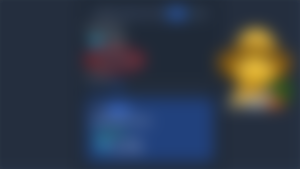This article was originally written on Pubish0x as a part of the #BinanceFARMer Contest https://www.publish0x.com/publish0x-contests/binancefarmer-writing-contest-and-giveaway-1-dollars-000-cen-xykxewd?a=J0dNkpAveL
Publish0x is a great idea. Both writers and readers earn crypto! Consider joining Publish0x with my referral link. https://www.publish0x.com?a=J0dNkpAveL
The link to my original article can be found here https://www.publish0x.com/tokenomics/is-binance-smart-chain-the-lost-ark-xerkegk?a=J0dNkpAveL
Do you remember how difficult it was to send an email in 1995? Do you remember how long it was before you could load an image with the dial-up system at that time?
Do you remember that computers had to be reconfigured because the operating systems of those times were not prepared for the Internet?
The Internet was revolutionizing the world in those days. But, we did not know. We took it almost like a game, without knowing very well what it was for, and very few people were realizing the fundamental change that this ecosystem was going to bring in their lives.
When we look back and remember how “happy” we were in those years, in reality, the brain is setting us up, because we only remember happy moments, and we do not frame them in the general environment of tension and anxiety that surrounded us at those “happy” times. We all tend to analyze in isolation and not as a part of a higher infinite system. We have been immersed for about 5 years in a process of a radical change of all the systems that have been managing our lives centrally. Until the emergence of Bitcoin and the launch of the global decentralization process that we are faced with dozens of new projects per day, the Internet was almost a “digital reproduction” of the centralization devised 200 years ago by controlling élites. The crypto-sphere represents the first cry for freedom from the control of monopolies, oligopolies, corporations, banks, and self-styled "democratic" governments.
However. So much novelty thrown onto the field of play requires responsibility, research, serenity, and critical thinking. Almost nothing.
The goodwill of many projects that want to repair and/or improve the performance of other projects that tend to become centralized and managed by elites, can nevertheless sin from a misinterpretation of user evaluations, and do more harm than good.
That is why I remain crypto-agnostic and only analyze the current maelstrom using critical thinking, without emotions or haste, It is the logical thing to do.

The arrival of the Binance Smart Chain (BSC) is a fact that should undoubtedly fill us with joy to face the current low scalability of Ethereum and the insane fees charged by the network for processing operations. Something like a monopoly?
But beware. We may be receiving the BSC as the "lost ark" and suffer some disappointments for not knowing how to use it. Opening the "lost ark" was a big problem for the Indiana Jones raiders. Of course, Harrison Ford knew how to deal with the disaster. At the moment, my feeling is that BSC is a great adventure, kind of like in the movie Indiana Jones and the Raiders of the Lost Ark, which is worth getting into.





Disclaimer. All images from the movie Indiana Jones and the Raiders of the Lost Ark (1981) were taken as a screenshot of trailers available for free on Youtube
I say this because I am not a regular operator of DeFi and less of Yield Farming. Only a few operations and some of the simplest. Today there are so many strategies (actually they should be called "tactics" and not "strategies", but we will leave that for another post since the community has more than accepted the word "strategy"), that it gives the impression that the DeFi ecosystem is going outlining itself towards an area that will only be able to be managed by another élite. Exactly the opposite of what it was conceived for. Especially Harvest.Finance with their “humbles” farmers and their “bread for the people”.

In any case, I am not a traditional farmer. I am a man of the sea. So my farming is different. I have an oyster farm at the end of the world, in Argentina, and I can assure you that that is very very risky… Hahaha

So I love the idea of Binance Smart Chain teaming up with Harvest.Finance to develop strategies where users can trade with great speed and pay negligible fees. But I think a lot of research is needed for newies especially, as you have to understand the fundamentals in depth before venturing to open the “lost Ark”.
So I went to the map room to study.


And I found interesting things.
Everything that follows may seem silly to seasoned Harvest Finance farmers, but my intention is to warn you about using BSC before you lose money by not understanding the fundamentals. The truth is that, in the current state of the art, it is not very easy to configure the BSC in a wallet, pass crypto through a bridge and transfer it to the vaults. It is the same situation that I related at the beginning with the dial-up Internet, and we hope that the developers will quickly transform this into an easy access ramp, without so many configurations and interpretations, so that really “all” people can access this fabulous ecosystem and have their daily bread in the revolutionary system that we are developing together.
Please don't get me wrong, I am a staunch defender of the crypto-sphere and DeFi because I believe that this new paradigm frees us from the common enemy that are banks, corporations, central banks, and governments. Binance Smart Chain (BSC) hits a record of daily 6 million transaction volume and proved to be the true challenger in DeFi for Ethereum. I just want as many people as possible to have access to DeFi and, in that way, break together with the current system.
To start with, Binance Chain and Binance Smart Chain are different blockchains. Binance Smart Chain is not a renamed version of Binance Chain, nor is it a layer 2 or sidechain platform to extend Binance Chain. Binance Smart Chain is a completely separate and independent blockchain that can continue to function even when Binance Chain goes offline. At the same time, both chains are designed to work in parallel.
Binance Chain, launched in 2019, is a blockchain "optimized for fast transactions" to support Binance DEX, a decentralized exchange that allows users to direct exchanges with each other.
Binance Smart Chain, launched in September 2020, is a blockchain platform for developing and distributing dApps that can use “Smart Contracts”.
The special thing about Binance Smart Chain is its low fees and fast transaction speed, but the most special thing is its compatibility with EVM (Ethereum Virtual Machine). Due to EVM compatibility, DApps developed on Ethereum can be imported into Binance Smart Chain as-is, and Ethereum wallets such as Metamask can be used as-is. It is also possible to use DApps or tools as-is, and use the same wallet address that we have in Ethereum in Binance Smart Chain.

The Binance Chain token standard is denoted by BEP2, and the Binance Smart Chain token standard is denoted by BEP20. The BEP2 wallet address refers to Binance Chain, and the BEP20 wallet address refers to Binance Smart Chain (BSC).

Careful with this. We can lose our tokens if we don't send them to a compatible address.



Binance Smart Chain uses Binance Coin (BNB) as its native currency, so gas transaction fees are paid in BNB. It also has cross-chain functionality. Binance has completed the development of cross-chain interoperability for BTC, ERC20 on Ethereum (ETH, LINK, USDT, DAI, etc.), XRP, BCH, LTC, ADA, DOT, XTZ, EOS, ONT, and other assets. This means that these assets can migrate to the Binance Smart Chain and become liquidity for DeFi operations. With a block time of around 5 seconds and a Proof of Authority (PoA) consensus mechanism, BSC enables high-speed transactions that only cost a few cents to network participants.
One of the fundamental tools of the ecosystem is the Binance Bridge. This interface is the true architect of the revolution.

Suppose I have BTC on the Bitcoin network and I want to use that BTC on the Binance Smart Chain. Through the bridge, we transfer BTC to a smart contract that will block it and create a token in the BSC called “Binance-Peg-BTC”. The process can also be done in reverse without problems. This means that we can have tokens that follow the value of Bitcoin or any other cryptocurrencies in the BSC, similar to WBTC or renBTC on the Ethereum network. When we buy BTC on the Binance exchange and we want to withdraw them, the system gives some options. If we choose the option to withdraw for BTC, we have to enter a Bitcoin wallet address and then we receive BTC. But we also have the option to receive Binance-Peg-Bitcoin (which is worth the same as BTC), and then we have to enter the address of a wallet that is compatible with the Binance Smart Chain and withdraw. In this case, the fees are almost 100 times lower.
The speed of transactions in BSC has achieved thanks to the consensus protocol used called Proof of Staked-Authority. To be a validator in Binance Smart Chain you have to stake BNB. According to the amount blocked will be the possibility of obtaining a block to validate, such as in Cardano and Tezos. The difference is in the word "authority", which means that there is a limited number of validators, specifically 21. This fact is essential to significantly reduce network costs, but greatly increases the risk of centralization, and that is frankly undesirable. The same consensus protocol that is used to speed up the ecosystem can turn us on the famous red light of centralization. Anyway, to be a validator you have to stake 10,000 BNB, a considerable sum. If someone detects malicious behavior from a validator, he/she can make a “slashing-request” and the validator can lose his/her stake. That is, considering the famous blockchain trilemma, Binance Smart Chain gains in scalability and security, but loses in decentralization.
The most widely used application on Binance Smart Chain is PancakeSwap, which is an AMM Automated Market Maker and decentralized exchange. Allows you to exchange one token for another. It is very similar to Uniswap. For example, you could trade Binance-Peg-BTC for Binance-Peg-ADA. It also allows acting as a liquidity-provider to participate in the fees of all the swaps that are made, farming in the process the CAKE tokens that can be used as liquidity in other pools. This is the true essence of Yield Farming.
Another widely used application is Venus, which allows you to borrow in a stablecoin called VAI, depositing as collateral another currency such as Binance-Peg-BTC or some other compatible with the Smart Binance Chain, and paying the loans with really very low interest. On the Ethereum network, this would be like MakerDAO or Compound. On the other hand, you can also lend cryptocurrency in a decentralized way, and earn interest in cryptos, such as Celsius, AAVE, and Oasis, with rates of 15% in stablecoins and 6% in BTC or ETH.
How is all this sauce handled?
Short & Sweet.
If you have crypto, it is best to create an account in Binance to deposit and withdraw them through the Binance Smart Chain. If you don't have crypto, you can buy it directly from Binance, or from another exchange and send it to Binance.
As in the case of the Ethereum network in which it is always necessary to have ETH in the wallet to pay for gas, in this case, you always have to have BNB in your Smart Chain wallet because it is used to pay for gas for all transactions. You will find it remarkable how little you pay for gas at BSC.
For all these actions that I describe below, there are very good tutorials published in recent months especially here on Publish0x.
1- Install Metamask
2- How to hook up your MetaMask to the Binance Smart Chain
3- Pass crypto assets from other blockchains to the new Binance Smart Chain wallet, using the bridge
4- Choose a Binance Smart Chain strategy in Harvest Finance and deposit.
The strategies are many and the list grows practically daily.
With the “Cultivator” tool, returns can be calculated for practically all strategies. It is very useful and helps in the evaluation, which, as we see, is not simple. But imagine what it was like before Harvest Finance existed!

In this example, 0.1 ETH is deposited for 52 weeks in the “ellipsis_EPS_BNB Pool” strategy, and the estimated profit is 2.74 ETH with an APY (compound) of 2738.26%. Of course, this is a theoretical rough estimate, and there is no certainty that this will actually happen in practice.
Attractive no? The problem is that there are hundreds of them!
Look if not ...

For the more sophisticated humble farmers, take a look at this post from @Mynima and see the scope of this ecosystem.

¡HELP ME INDI!
As usual, none of the things written in this post are financial advice and are not intended to replace personal research.
Thank you for reading!
If you have any questions or comments, please feel free to leave them down below
You can also contact me at gerardo.saporosi@gmail.com


















